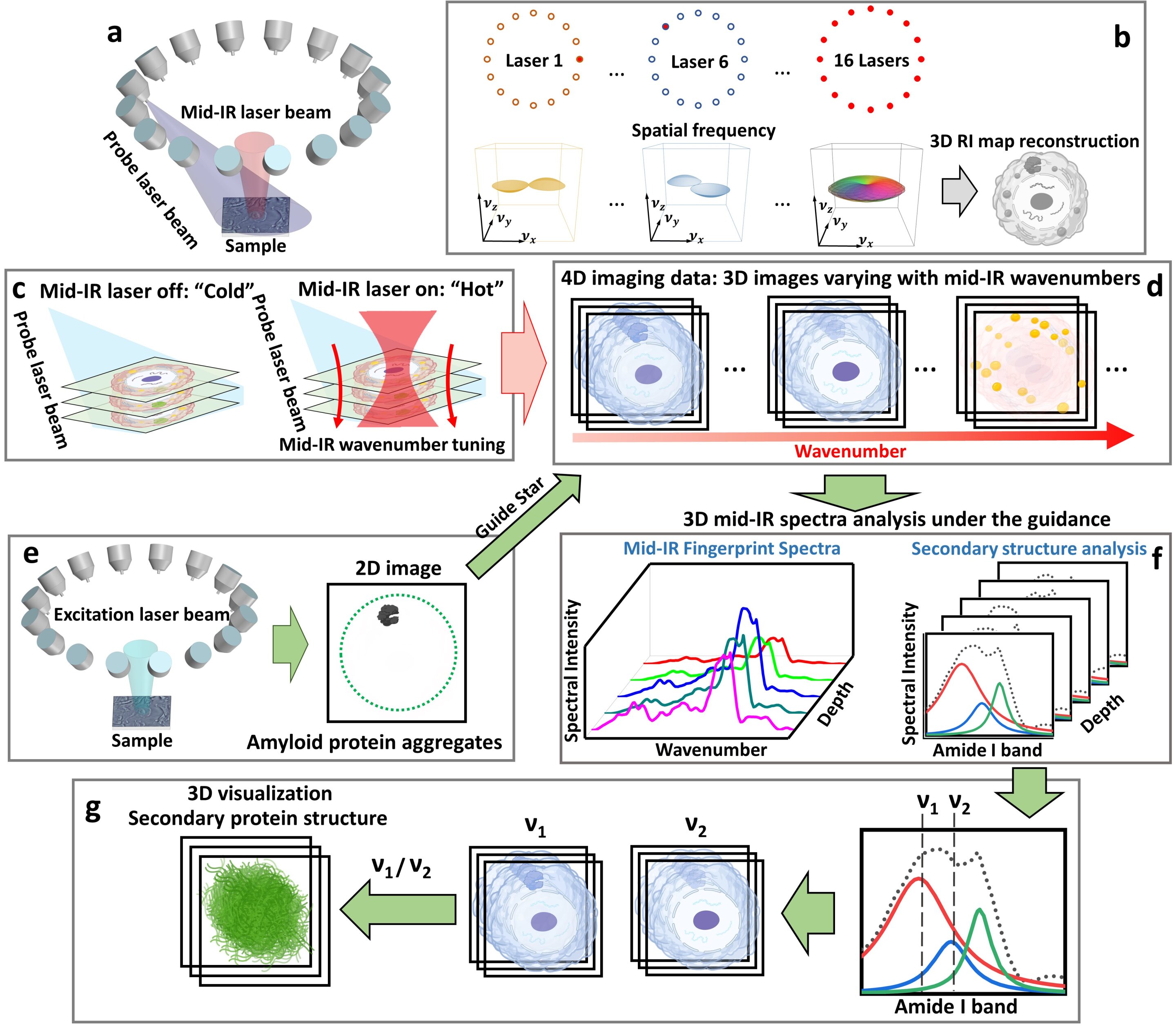The study of tau aggregates, a prominent form of amyloid protein, has become crucial in understanding the mechanisms behind neurodegeneration. These aggregates, including tau fibrils and oligomers, are associated with various neurodegenerative diseases. However, the formation mechanism and underlying disease pathways of tau aggregates are still not fully understood.
High-resolution chemical imaging tools are necessary to investigate tau aggregation and characterize intracellular volumetric tau aggregates in their natural environments. Several methods, such as X-ray crystallography and cryo-electron microscopy (Cryo-EM), have been developed for this purpose. However, these methods have limitations in providing volumetric site-specific spectroscopic analysis and three-dimensional imaging of protein aggregates within cells. This poses a significant challenge in obtaining three-dimensional chemical information of intracellular protein aggregates in their native environments.
In a recent publication in Light Science & Applications, Dr. Ji-Xin Cheng and his colleagues present a computational fluorescence-guided mid-infrared (mid-IR) photothermal microscope called Fluorescence-guided Bond-selective Intensity Diffraction Tomography (FBS-IDT). This innovative technique combines single-photon 2D fluorescence imaging with pump-probe pulsed MIP intensity diffraction tomography, enabling molecular-specific 3D chemical imaging and site-specific mid-IR spectroscopic analysis of intracellular tau fibrils.
FBS-IDT allows the extraction of chemical information regarding specific protein aggregates from background protein signals within cellular fluids. It offers high speed and resolution, making it possible to correlate tau fibrils with lipid accumulation. Additionally, FBS-IDT can extract depth-resolved mid-IR fingerprint spectra and visualize the protein secondary structure of intracellular tau fibrils in three-dimensional space.
The researchers highlight the significance and advantages of the FBS-IDT technique. It overcomes the challenges associated with 3D chemical imaging of intracellular amyloid protein aggregates and their protein secondary structures within fluid environments. The FBS-IDT system is cost-effective and suitable for routine usage in most laboratory settings. It also provides opportunities for in vivo imaging of intracellular protein aggregates and can be adapted to fulfill diverse imaging requirements.
More information:
Jian Zhao et al, Mid-infrared chemical imaging of intracellular tau fibrils using fluorescence-guided computational photothermal microscopy, Light: Science & Applications (2023). DOI: 10.1038/s41377-023-01191-6
Citation:
Computational mid-infrared photothermal imaging unveils intracellular tau aggregates (2023, June 20)
retrieved 21 June 2023
from https://phys.org/news/2023-06-mid-infrared-photothermal-imaging-unveils-intracellular.html
This document is subject to copyright. Apart from any fair dealing for the purpose of private study or research, no
part may be reproduced without the written permission. The content is provided for information purposes only.
Denial of responsibility! TechCodex is an automatic aggregator of the all world’s media. In each content, the hyperlink to the primary source is specified. All trademarks belong to their rightful owners, and all materials to their authors. For any complaint, please reach us at – [email protected]. We will take necessary action within 24 hours.

Jessica Irvine is a tech enthusiast specializing in gadgets. From smart home devices to cutting-edge electronics, Jessica explores the world of consumer tech, offering readers comprehensive reviews, hands-on experiences, and expert insights into the coolest and most innovative gadgets on the market.


